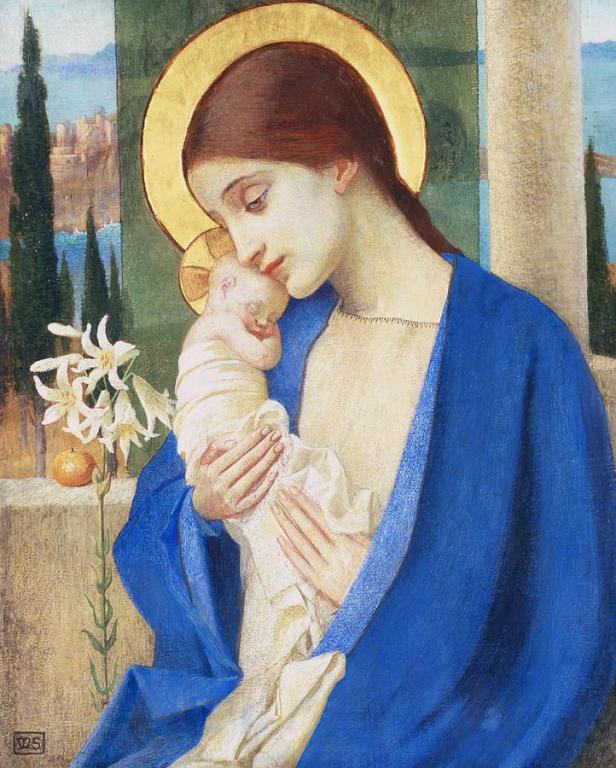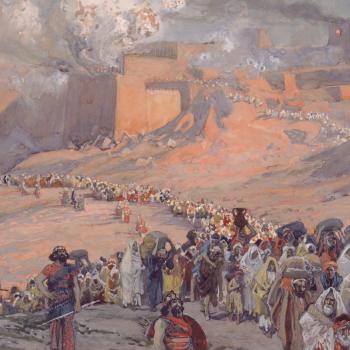
(Wikimedia Commons public domain image)
I published this article in Salt Lake City’s Deseret News back on 19 December 2019: “What is the appeal of Christmas beyond Christian believers?” It was supposed to have been co-written with my dear friend William J. Hamblin. But, to my deep and continuing sorrow, he had suddenly passed away the previous week, on 10 December 2019:
Landing this month at the international airport in Cairo, Egypt — busy gateway to a city and a nation that are roughly 85%-90% Sunni Muslim — you will see Christmas decorations everywhere. And such decorations show up prominently in hotels and public spaces well beyond the airport and the city.
In Japan, where estimates put the number of Christians somewhere between 1%-2% of the population or perhaps even lower, a quite secularized version of Christmas focused on Santa Claus and gift-giving is widely observed. Also prominent among Japanese Christmas traditions is eating fried chicken from KFC, where the statues of Colonel Sanders that stand in front of KFC restaurants are dressed as Santa Claus during the holiday season. Japanese people who don’t pre-order their KFC Christmas dinners can end up waiting in long lines for them, and could miss out altogether.
“Why KFC?” you might ask.
In 1970, just a few months after Takeshi Okawara opened the first KFC restaurant in Japan — he would go on to become the CEO of Kentucky Fried Chicken Japan from 1984-2002 — he conceived the idea of a Christmas “party barrel” containing not only chicken but, in some premium cases, ribs and stuffing and cake and even wine. In 1974, the promotional campaign went national with the slogan “Kurisumasu ni wa Kentakkii” (“Kentucky for Christmas”). Since, in the 1970s, there were few if any traditional Japanese Christmas observances, KFC filled a void.
In the West, too, Christmas remains by far the dominant holiday even among those indifferent to its theological background, including many non-Christians. In increasingly post-Christian Europe, for example, the colorful Christmas markets of such cities as Krakow, Dresden, Cordoba, Berlin, Frankfurt, and Amsterdam continue to flourish. In America, scores of virtually interchangeable Christmas-themed television movies celebrate “redemption through romance” nonstop through the season, with little or (usually) no specific religious content at all.
What can explain the appeal of Christmas to people well beyond the community of committed Christian believers?
First of all, it must be recognized that a superficial view of Christmas can easily be rendered much less threatening, theologically speaking, than Easter. Everybody can accept and celebrate the birth of a baby, whereas the revivification and eventual ascent to heaven of a crucified man is difficult to reconcile with a non-Christian or even secular worldview.
It seems clear, though, that there is a very great deal, even in the most watered-down versions of Christmas (as illustrated in those television movies), that speaks to the deepest longings of human hearts around the world.
Whatever our culture or religious views, for instance, the message sung by the angels to the shepherds of Bethlehem 2,000 years ago resonates with all of us: “Peace on earth, good will toward men” (compare Luke 2:14). Every Lifetime or Hallmark movie concludes with love and harmony, things for which we all yearn.
The practice of gift-giving reminds us of the generous, kind people we would like to be and among whom we would like to live. Think of the chastened and redeemed miser Ebenezer Scrooge in Charles Dickens’s 1843 novella “A Christmas Carol,” which, like the television movies that proliferate during the Christmas season, is not an explicitly Christian tale: The new Scrooge became both generous and beloved, and, as Dickens writes, “it was always said of him, that he knew how to keep Christmas well, if any man alive possessed the knowledge.”
The birth of a baby — any baby — is a moment of hope and the inauguration of virtually boundless possibilities, and Christmas powerfully reminds us of these things once more each year.
Finally, the image of the Holy Family, of the little baby snugly wrapped against the cold and lying in a manger, reminds us of the security and warmth of our own homes and families, whether as they really are or as we aspire for them to be. These are the kinds of homes and families conjured up, too, in many beloved Austrian Christmas carols and in the Victorian illustrations of father and mother and children — even Queen Victoria and Prince Albert and their young family — gathered by the hearth and around the Christmas tree, then fairly recently introduced from Germany.
We all yearn for lives of love, safety, harmony, warmth, kindness, generosity and possibility. But this is not our world. Christmas, however, whispers that we’re strangers here, and we feel that we have wandered from a more exalted sphere.

Wikimedia Commons public domain image
Since only a couple of years after the launch of Interpreter: A Journal of Latter-day Saint Faith and Scholarship, we decided to invite annual essays for Christmas and Easter. We didn’t think it quite appropriate to run an ordinary article — on the hydraulics of the Nephite River Sidon, say, or on the etymology of Gadianton or Kishkumen — on the Friday before Christmas or even on Christmas Day itself, let alone on Easter Sunday. Here, for your possible interest, are the Christmas essays that we’ve published thus far:
Orson Scott Card wrote our first, for Christmas 2014: https://journal.interpreterfoundation.org/christmas-is-about-a-baby/
Clayton Christensen wrote our Christmas message for 2015: https://journal.interpreterfoundation.org/he-did-it-a-christmas-message/
Our Christmas 2017 essay came from Jenny Oaks Baker: https://journal.interpreterfoundation.org/christmastime-when-our-souls-can-sing/
Elder Spencer J. Condie provided the 2018 Christmas piece:https://journal.interpreterfoundation.org/christmas-in-transition-from-figgy-pudding-to-the-bread-of-life/
The Christmas essay for 2019 came from Kristine Wardle Frederickson: https://journal.interpreterfoundation.org/musings-on-the-birth-of-the-savior-jesus-christ/
Cherry Bushman Silver contributed the 2020 Christmas essay: https://journal.interpreterfoundation.org/christmas-as-devotional-a-time-of-commitment/
Daniel C. Peterson furnished the 2021 Christmas article (as an obviously desperate last-minute substitution): https://journal.interpreterfoundation.org/christmas-and-a-condescending-god/
David F. Holland authored our 2022 Christmas piece: https://journal.interpreterfoundation.org/puritans-pagans-and-imperfect-christmas-gifts/
Our 2023 Christmas essay is scheduled to appear this coming Friday, and millions are already wondering who its author will turn out to be. Just between us: A reliable source assures me that — incredible as it may sound — the author will likely not prove to be Taylor Swift. But who knows?













